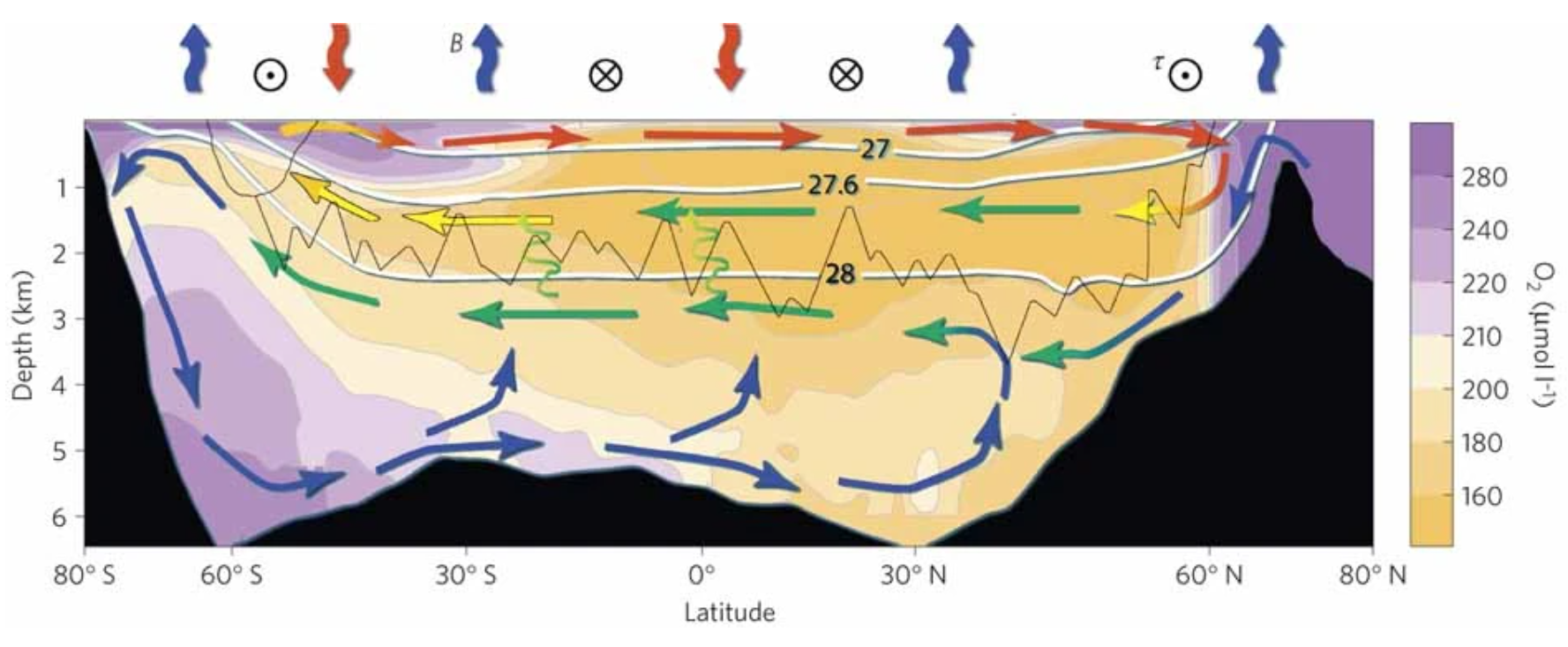Meridional overturning circulation - Densest water in Antarctica travels Atlantic, Indian, and Pacific.
Meridional overturning circulation, also known as the ocean conveyor belt, is a critical system of ocean currents that transports heat and materials around the world. The densest water produced in Antarctica plays a crucial role in this system, as it travels northward through the Atlantic, Indian, and Pacific oceans.
The process begins with the formation of dense water in Antarctica, where cold winds cause sea ice to form and salt to be expelled from the surrounding seawater. This process creates a highly saline and cold layer of water that sinks to the ocean floor, creating what is known as Antarctic Bottom Water.
As the dense water sinks, it creates a flow that drives the global circulation of the oceans. The water travels northward along the ocean floor, eventually reaching the three ocean basins where it upwells and merges with other ocean currents. This process helps to distribute heat around the planet, affecting global climate patterns.

However, recent studies have suggested that global warming could disrupt the meridional overturning circulation. As the Earth's temperature rises, the melting of the Greenland and Antarctic ice sheets could introduce large amounts of fresh water into the ocean, which could dilute the salinity of the dense water in Antarctica and hinder its ability to sink. This disruption could have significant implications for global climate patterns and marine ecosystems.
To better understand the meridional overturning circulation and its potential impacts, we are using a combination of satellite data, oceanographic measurements, and computer simulations. By studying this critical system, scientists hope to gain insight into how changes in the ocean's circulation could affect global climate patterns and help inform strategies for mitigating the effects of decadal-to-millennial scale climate change.